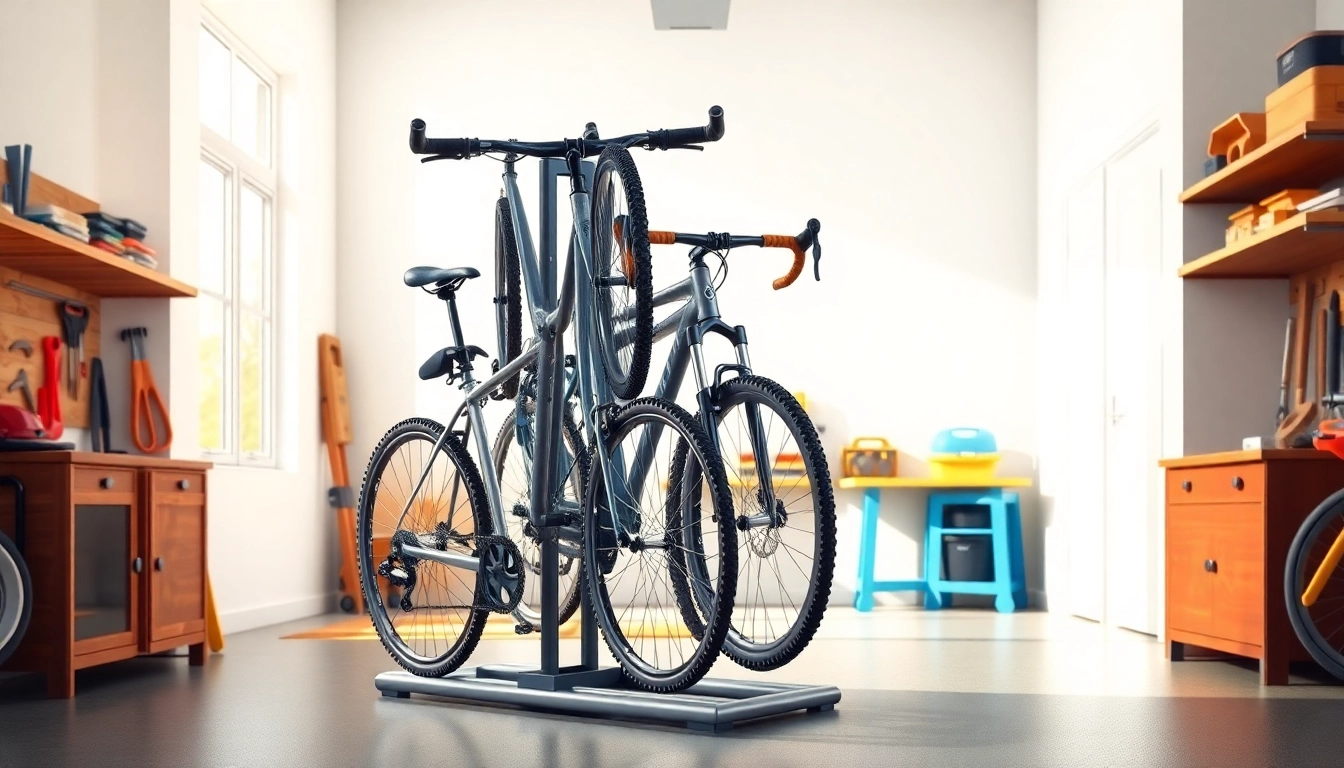Understanding the Importance of Space-saving Bike Rack
Bicycles are a popular mode of transportation and recreation, contributing significantly to environmental sustainability. However, storing them effectively is a common challenge, especially for those with limited space. The Space-saving bike rack serves as an ideal solution for organizing your bikes, maximizing available space in homes, garages, or apartments while maintaining accessibility and safety. This article dives into the importance, types, benefits, installation tips, and maintenance of space-saving bike racks.
Why Choose a Space-saving Bike Rack?
Choosing a space-saving bike rack is about more than just saving physical space. It’s about enhancing the functionality of your living area. Many urban dwellers, small-home owners, and families grapple with limited space. A well-designed rack can keep bikes secure, organized, and easily accessible. Additionally, it helps free up valuable floor space for other uses or activities, improving the overall aesthetics of your living space.
Key Features of Effective Space-saving Bike Racks
Not all bike racks are created equal. When searching for an effective space-saving bike rack, consider the following key features:
- Vertical Storage: Allows bikes to be hung vertically, utilizing wall space efficiently.
- Flexibility: Some racks accommodate various bike sizes and styles, allowing for custom arrangements.
- Sturdiness: Quality materials ensure the rack can support the weight of the bikes securely.
- Ease of Installation: The best products come with clear instructions and necessary mounting hardware.
- Space Efficiency: Ensure the design minimally protrudes into the living space, keeping bike storage unobtrusive.
Choosing the Right Location for Your Bike Rack
The placement of your bike rack is crucial for usability and convenience. Identify the most practical location based on the following:
- Accessibility: Choose a spot that allows easy access for the cyclist, preferably near the main entrance of the home or garage.
- Space Availability: Look for empty wall sections or ceilings that can accommodate vertical or overhead solutions without causing congestion.
- Environmental Factors: Avoid areas exposed to direct sunlight or harsh weather conditions to preserve the bike’s condition.
Types of Space-saving Bike Rack Designs
Wall-mounted Solutions: Maximizing Vertical Space
Wall-mounted racks are an excellent choice for homes with limited floor areas. These racks can hold bikes upright against walls, freeing up ground space. Different designs include:
- Vertical Racks: These allow bikes to be hung vertically, usually equipped with adjustable arms to accommodate various bike types.
- Hanging Hooks: Simple wall hooks can sometimes serve effectively for lightweight bikes, providing a minimalist solution.
Proper installation is essential; ensure that the hooks or slots are anchored well into the wall studs to safely support the bike’s weight.
Freestanding Racks: Versatility and Mobility
For those who may need to move their bike storage frequently or need flexibility in their arrangement, freestanding racks offer a versatile solution. These racks often allow for the storage of multiple bikes without requiring wall attachment, making them great for rental properties or temporary arrangements. Features include:
- Adjustable Heights: Many freestanding racks can be adjusted to different heights, accommodating various bike sizes.
- Portability: Lightweight and easy to relocate, they can be moved to different rooms or outdoor areas with minimal hassle.
Ceiling-mounted Options: Best for Compact Areas
Ceiling-mounted bike racks elevate your storage to new heights — literally! These are ideal for garages and compact spaces where wall or floor space is at a premium. Key aspects include:
- Hoisting Systems: Many ceiling racks come with a hoisting system for easy bike retrieval, enabling users to lift their bikes out of the way when not in use.
- Space Efficiency: Using ceiling space allows you to keep bikes out of the way, securing the floor for cars, tools, and equipment.
Benefits of Using a Space-saving Bike Rack
Organization and Clutter Reduction
One of the most significant advantages of a space-saving bike rack is its ability to maintain organization. Rather than bikes taking up floor space, a dedicated rack arranges them neatly, significantly reducing clutter and enhancing aesthetics. This organization extends beyond just bikes — it creates room for accessories, tools, and other items.
Enhanced Safety for Your Bikes
Parking bikes haphazardly can lead to damage or accidents. A designated rack minimizes the risk of falling over or being tripped over. Furthermore, a secure rack can also deter theft, especially when bikes are stored indoors or in visible areas from the street.
Increased Usability in Small Spaces
In cities and smaller living spaces, maximizing usability is paramount. A well-chosen Space-saving bike rack allows you to use previously unusable areas (like ceilings) effectively. This functionality makes it possible to enjoy biking without cluttering your living space.
Installation Tips for Space-saving Bike Rack
Tools Required for Easy Setup
Installing a bike rack requires specific tools to ensure a secure and safe setup. Generally, you may need:
- Drill and Drill Bits
- Stud Finder (for wall-mounted racks)
- Level (to ensure the installation is straight)
- Screwdriver
- Measuring Tape
- Pencil or Marker
Step-by-step Installation Process
While each rack may have specific installation instructions, here’s a general step-by-step guide:
- Choose Location: Identify where you want to mount or place the rack based on accessibility and space.
- Use a Stud Finder: For wall mounts, locate the wall studs for secure installation.
- Mark Drill Points: Mark where screws or bolts will go based on the rack’s instructions.
- Drill Holes: Make sure your drill bits match the size of your screws.
- Install the Rack: Attach the rack securely to the wall or set up the freestanding rack as per the product’s manual.
- Test Stability: Before placing your bikes, ensure that the installation is solid and that the rack can support the weight.
Common Mistakes to Avoid During Installation
Some pitfalls to watch out for when installing your space-saving bike rack include:
- Ignoring Wall Stability: Always ensure that racks are secured to wall studs, not just drywall.
- Over-tightening Screws: This can damage the wall or rack, compromising stability.
- Failing to Measure: Always measure the bike length and height to ensure proper fit for vertical or ceiling-mounted racks.
Maintaining Your Space-saving Bike Rack for Longevity
Regular Cleaning and Upkeep
Maintaining your space-saving bike rack helps increase its life span. Regular cleaning helps prevent rust or corrosion, especially in humid environments. Wipe down surfaces periodically, inspecting for grime that may accumulate. For wall-mounted racks, ensure that the area behind the bikes is also cleaned to avoid dust buildup.
Inspecting for Wear and Tear
Regularly check for signs of wear or damage. Look for loose screws, rusted parts, or warping. Early detection of issues can prevent accidents and prolong the useful life of the rack.
Adapting the Rack for Different Bike Types
If you have different types of bikes (road, mountain, etc.), ensure that your rack can accommodate these variations. Some racks may require additional attachments or adjustments. If you switch up your bike collection, evaluate your storage needs and adjust accordingly for optimal organization and security.



